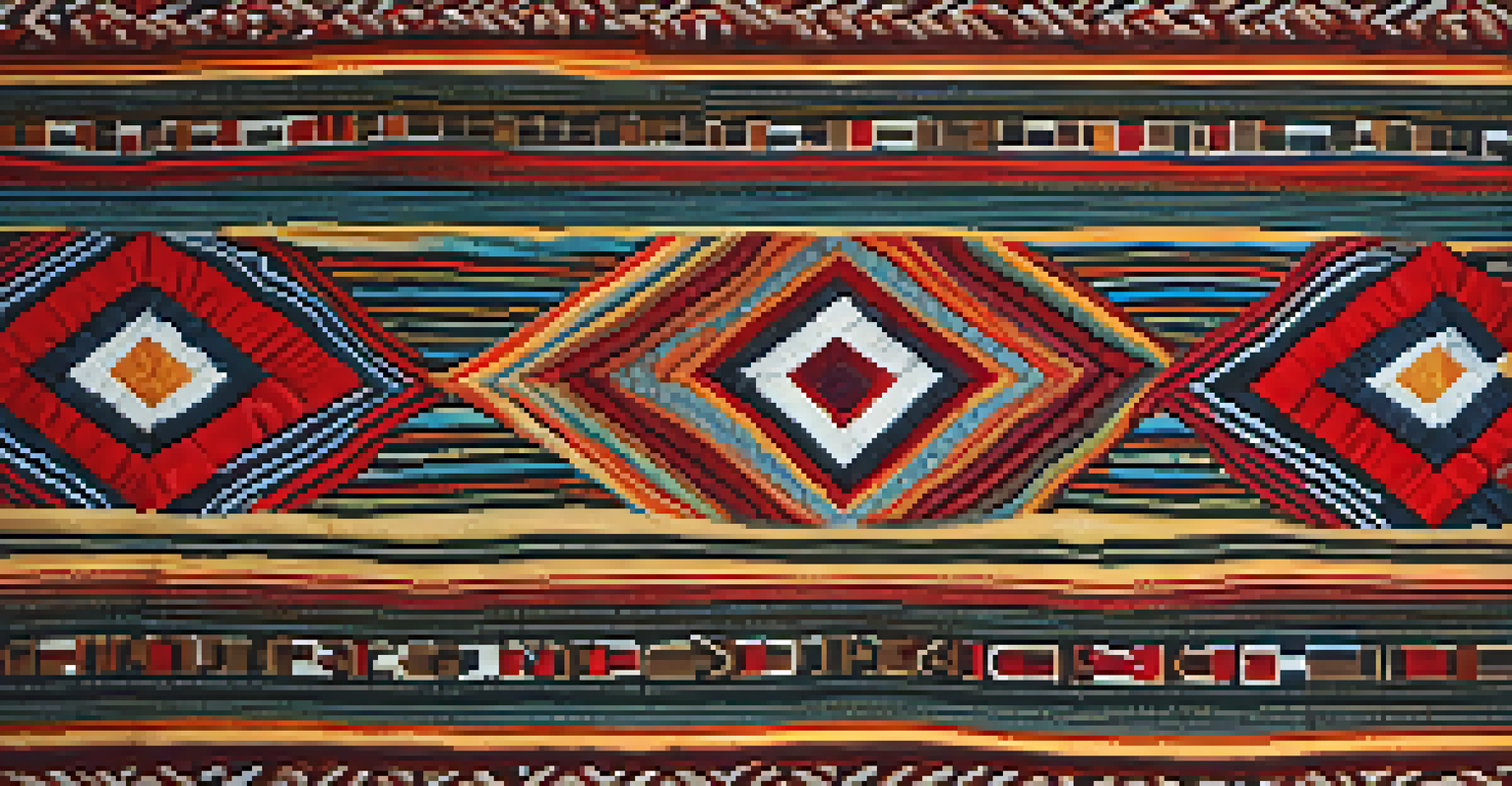Cultural Appropriation vs. Appreciation in Fashion Globalization

Defining Cultural Appropriation in Fashion
Cultural appropriation in fashion refers to the adoption of elements from one culture by another, often without permission or understanding. This can lead to a superficial representation of cultural symbols that hold significant meaning. For instance, when high-fashion brands utilize traditional garments or motifs from marginalized communities, it can strip those elements of their original context and significance.
Cultural appropriation is not a new phenomenon, but its implications are increasingly relevant in our globalized world.
Moreover, cultural appropriation often disregards the historical and social implications tied to the appropriated culture. This can create tension and resentment, particularly when the borrowing party profits while the source culture does not. It’s essential to recognize that cultural elements can’t simply be treated as fashion trends without considering their origins.
In this way, cultural appropriation becomes not just a fashion faux pas but a broader ethical issue. It raises questions about power dynamics and respect between cultures, making it crucial to approach fashion with sensitivity and awareness of its implications.
Understanding Cultural Appreciation in Fashion
Cultural appreciation, in contrast, involves a deep respect and understanding of another culture's traditions and aesthetics. When done thoughtfully, it celebrates diversity and fosters connections among different communities. For example, collaborating with artisans from a specific culture to create fashion items can be a beautiful way to showcase and honor their craftsmanship.

This approach also emphasizes the importance of context and intent. When designers engage with cultural elements, they should strive to represent them authentically and responsibly. This includes educating themselves about the cultural significance behind the designs and ensuring that the original culture benefits from their representation.
Cultural Appropriation vs. Appreciation
Understanding the difference between cultural appropriation, which disrespects and commodifies cultural symbols, and cultural appreciation, which honors and respects them, is crucial in fashion.
Ultimately, cultural appreciation enriches the fashion landscape by promoting inclusivity and respect. It invites dialogue about cultural narratives and encourages consumers to engage with fashion on a deeper level, rather than merely viewing it as a disposable trend.
The Role of Globalization in Fashion
Globalization has dramatically transformed the fashion industry, making it easier to share and access diverse cultural influences. Fashion trends now traverse borders at lightning speed, leading to a melting pot of styles and ideas. However, this interconnectedness can blur the lines between appreciation and appropriation.
Diversity is the one true thing we all have in common. Celebrate it every day.
As brands look to global markets for inspiration, the risk of cultural appropriation increases. Without adequate research and understanding, designers might inadvertently exploit cultural symbols. Thus, globalization presents both opportunities and challenges in how cultures interact within the fashion realm.
While globalization can promote cultural exchange, it is essential for designers and consumers alike to recognize the importance of ethical practices. A responsible approach to fashion fosters appreciation while mitigating the risk of appropriation, ultimately benefiting both artists and consumers.
Examples of Cultural Appropriation in Fashion
Several high-profile cases highlight the complexities of cultural appropriation in the fashion industry. For instance, when a luxury brand released a collection featuring a traditional Native American headdress, it sparked outrage for commodifying a sacred cultural symbol. Such instances demonstrate how fashion can inadvertently perpetuate stereotypes and diminish the significance of cultural artifacts.
Another example includes the appropriation of kimono designs by Western brands during fashion shows, often without any acknowledgment of their cultural roots. This not only disrespects the tradition but also ignores the voices of those who belong to that culture. These examples underscore the need for greater cultural sensitivity and awareness in fashion.
Globalization's Dual Impact
While globalization enables diverse cultural influences in fashion, it also heightens the risk of cultural appropriation if designers fail to conduct thorough research.
These cases serve as a call to action for both consumers and designers to engage in conversations about cultural respect. By recognizing these pitfalls, the fashion industry can work towards a more inclusive and responsible approach.
Spotting Cultural Appreciation in Fashion
Identifying cultural appreciation in fashion involves looking for intentional collaborations and respectful representations. Brands that work directly with cultural artisans or communities exemplify this practice. For instance, a fashion line that partners with local weavers to create a collection not only honors their craftsmanship but also ensures fair compensation.
Another indicator of appreciation is when brands educate consumers about the cultural significance of the designs they incorporate. This can be achieved through storytelling, showcasing the history and meaning behind specific garments or motifs. Such transparency fosters a deeper understanding and connection between consumers and the culture being represented.
Ultimately, cultural appreciation reflects a genuine interest in and respect for diverse cultures. It invites consumers to engage thoughtfully with fashion, recognizing that style can be a bridge between different communities rather than a barrier.
The Impact of Social Media on Cultural Discussions
Social media has become a powerful platform for discussions about cultural appropriation and appreciation. It allows voices from various cultures to share their perspectives, creating a dialogue that was less accessible in the past. This democratization of conversation empowers individuals to challenge brands when they feel cultural lines have been crossed.
Furthermore, social media provides a space for brands to learn from their audiences and adapt their practices. When consumers call out instances of appropriation, it encourages brands to reevaluate their approach and consider more inclusive strategies. This dynamic interaction fosters accountability within the fashion industry.
Role of Social Media in Awareness
Social media empowers cultural discussions, allowing voices to challenge appropriation while promoting appreciation and accountability in the fashion industry.
As a result, social media plays a crucial role in shaping public perception and promoting cultural understanding. It cultivates an environment where appreciation is celebrated, and appropriation is challenged, ultimately leading to a more respectful fashion landscape.
Moving Towards a More Respectful Fashion Industry
To foster a more respectful fashion industry, both designers and consumers need to prioritize ethical practices. This involves educating oneself about different cultures and their significance in fashion. Designers can take proactive steps by engaging with cultural communities and supporting local artisans, ensuring that their work is rooted in respect.
Consumers, on the other hand, can play a vital role by demanding transparency and accountability from brands. By supporting businesses that prioritize cultural appreciation over appropriation, shoppers can contribute to a more ethical fashion ecosystem. This collective effort encourages brands to reflect on their practices and strive for inclusivity.

Ultimately, moving towards a more respectful fashion industry requires commitment and awareness from all parties involved. By fostering genuine appreciation for diverse cultures, the fashion world can become a more enriching and harmonious space for creativity and expression.